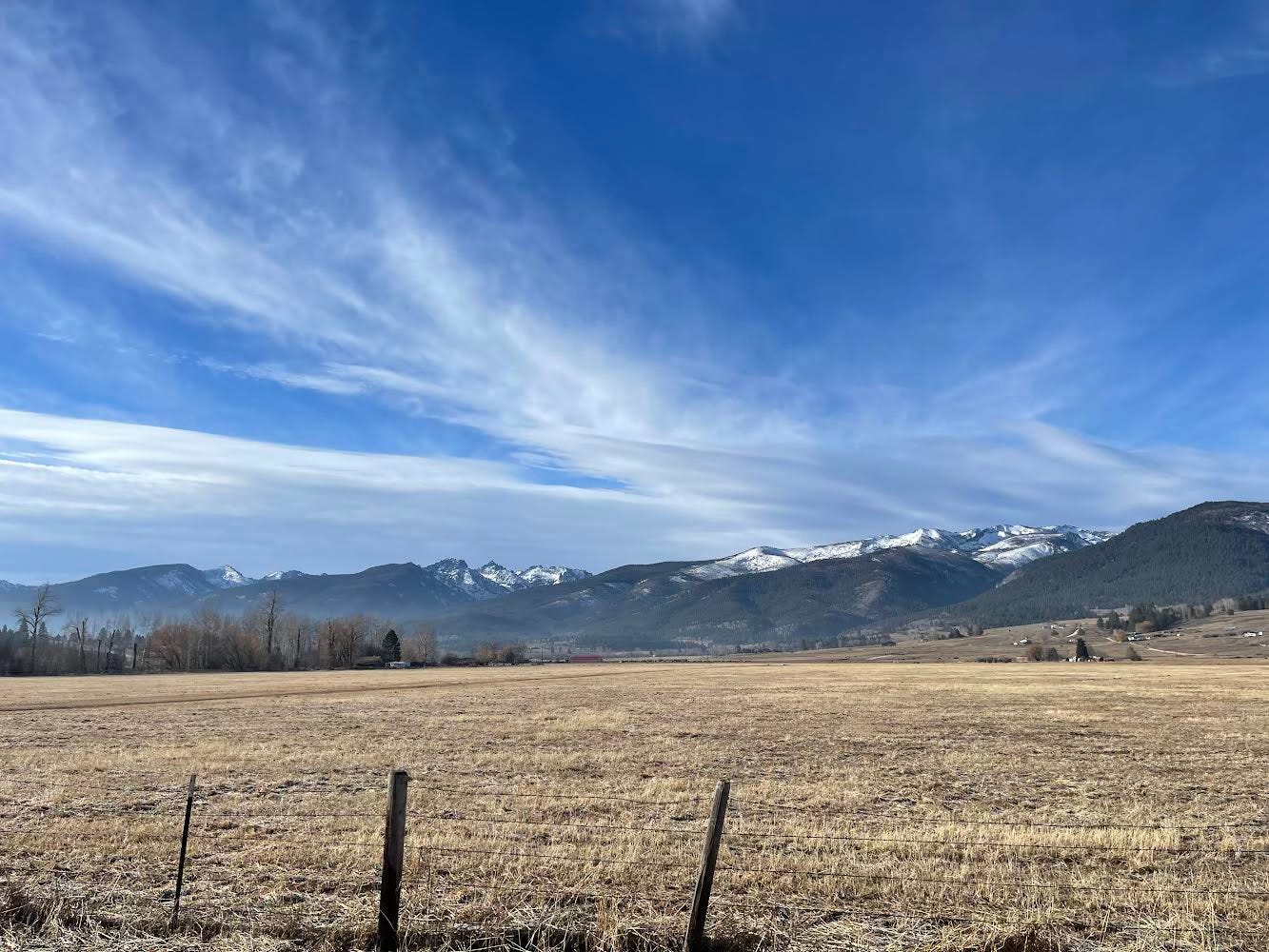U.S. vs Mexico: Reflections After Three Months
A visit to the U.S. highlights some of the differences between our new and old home countries
Greetings from Victor, Montana!
For the next few days Andrea and I will be here to visit her family. Victor is an exceptionally small town of just a couple of hundred people about an hour south of Missoula, one of the Montana’s larger cities. To give you a sense of how rural it is—and how quintessentially Montana—the area is a dream for anyone who likes to hunt, hike, or fish, kayak, canoe, or float on rivers, and features a mix of snow-capped mountains and open plains and valleys. It’s very beautiful, the beer is incredible, and there’s surprisingly good pizza. But, the next town over from Victor is Pinesdale, a cloistered radical Mormon polygamist community that has created choke points in and out of the town by illegally blocking off county roads with massive concrete barriers, and the next town over after that is Hamilton, which is home to Rocky Mountain Laboratories, a “biosafety level 4” (the maximum level) NIH biomedical research facility “best known for its research into vector-borne diseases.” The tv show Yellowstone was also filmed in the same county. There are also many, many, many cannabis dispensaries and gun stores.
This is my first trip back to the U.S. since we moved to Mexico in mid-September, and as you might imagine it’s created an interesting opportunity for comparisons.
As I’ve previously written, we’re well-aware that Oaxaca is not a perfect place, but our decision to move (and this is particularly true for me) was also driven by a deep dissatisfaction with life in America. Being caught between two places—the home we recently left, and the one we haven’t yet acclimated to—makes the differences between the countries stand out even more.
Differences
American Shopping Is Incredible
As I wrote about in this year’s Christmas post, we do most of our shopping for others when we travel, and as a result I typically have a good sense of what shopping looks like in whatever countries we visit. I’ve been to 30 countries and nowhere I’ve been has shopping as good as it is in the United States.
It’s a common trope about America that visitors and immigrants note how shocking the abundance is here, and our small amount of time outside of the U.S. has made that clear to me as well. It is truly incredible how much variety the U.S. has access to, and also how high quality the goods are. We go to Sam’s Club in Oaxaca for certain purchases where the variety and selection is substantially better than at other Mexican stores. The Sam’s Club in Oaxaca pales in comparison to the Costco here in Missoula. Americans have no idea how good they’ve got it.
America Has Better Dairy
Mexico loves cheese. LOVES IT. But the quality of American dairy, in terms of freshness and consistency, is much better.
This might not seem like a big deal, but people in both the U.S. and Mexico consume a lot of dairy, and having access to good dairy is something that comes up daily. Mexican butter is funky, tasting not so much like it’s cultured (which offers its own distinct twang) but more like it’s simply gone rancid. Mexican sour cream (crema) and Mexican heavy cream are both heavily stabilized with all sorts of gums and industrial additives, making it quite gloppy. And the Mexican cold chain for milk basically isn’t to be trusted, so we buy shelf-stable boxed milk.
American Drug Addiction Is Obvious and Profound
Addiction in the United States is immediately apparent and overwhelming. This was true from almost the moment we arrived in Boston, and was especially evident in New Hampshire. I’m particularly attuned to it because of the decade I spent working in mental health, primarily with forensic (court-involved) people with either past or ongoing addiction and substance abuse. But even given my experiences, I was shocked at the visible fingerprint fentanyl and methamphetamine has left on the United States. Andrea and I have seen people who are actively intoxicated and some who are going through withdrawal, and poverty here has never been more visible.
At the same time, the small businesses we visited were thriving. Shelves were fully stocked, people were well-dressed in expensive clothing. Restaurants were bustling. It’s a sign that the people who are wealthy in America are doing better than ever, while the people who have little are suffering in a way that perhaps has no comparison point in U.S. history.
Mexico is LOUD
This one runs both ways: Mexico is incredibly loud, and the United States (at least where we’re visiting) is incredibly quiet.
Mexico loves a party and is unabashedly mercantile, and there literally isn’t a day that goes by where we don’t hear a live band in the village, or firecrackers going off to celebrate something, or loudspeakers set onto roving cars, trucks, and motorcycles advertising (respectively) tortillas, cylinders of propane or scrap metal removal, and tamales. It doesn’t help that our house is located somewhat near the “escualita” (“little school”), which is the local sarcastic expression used for the area of the neighborhood where all the drunks gather at night to be loud buttheads. Edgar told us the drunks also love to set off firecrackers after they get soused, about which he said very seriously about the quarter sticks of dynamite they shoot into the air from pieces of loose bamboo, “it’s very dangerous.”
America, on the other hand, is deathly quiet. Sure, there’s traffic noise, and of course the noise of a place is hugely influenced by its density. I’d never compare the noise of the town where my parents live to our old neighborhood in NYC. But where Mexico will tolerate what basically amounts to any amount of noise, at any volume, at any time of day or night, and neither the police, town, or county will do anything to reign in noise, in the U.S. that’s just not the case.
Below is a video shot from our balcony of the noise from a party happening many hundreds of meters away. If people created the same amount of noise in the U.S. that they do on Mexico, they’d be arrested (or shot by one of their neighbors).
America Is Expensive
We were told by friends in Mexico City that visiting America means knowing ahead of time (and being ok with) the fact that you’re going to spend a lot of money. But even after living in the U.S. for my entire life it’s shocking to go from Mexican prices back to U.S. prices.
In Mexico if I go to the greenmarket on Wednesday and get a week’s worth of vegetables, fruit, and cheese I’ll probably spend in the range of $15-20. Here, as you’re well-aware, it could be anywhere from $100-300, depending on the size of your family. God help you if you also need pantry items or condiments. We’re also seeing price increases are not limited to the famously expensive East coast. In Victor and Missoula, where prices were always much more modest, price increases seem to be in the range of 20-30%. All of a sudden a sandwich here costs $15 and a burger might be around $18-20.
In America, Pets Are Revered
Oaxacans have a relationship with their pets that many Americans might find truly offensive. American pets are treated like royalty, and it’s been both wonderful and overwhelming to see the range of incredible goods available for pets (and pet owners). In Mexico, pets are more disposable.
I don’t feel comfortable speaking universally about Oaxaca, both because we haven’t been there long enough to have comprehensive knowledge and because we’ve seen a tiny slice of the state. But what we’ve learned from observation and asking many, many questions is that pets are mostly looked at as service animals, largely owned to provide some measure of home security, and people don’t mind replacing them. Dogs are often fed scraps like old tortillas, or left to forage for their own food. Medical care is not guaranteed. If the animal gets pregnant, or otherwise inconveniences the owner, it’s not uncommon to simply abandon them. There are a lot of strays here, a limitless pipeline of puppies. If a pet dies, a person gets a new one.
The American culture of pet reverence does not translate to where we live in Mexico. So while in the U.S. pet goods are incredible, on par with the quality of toys made for children, pet goods in Oaxaca are expensive, of obviously low quality, and of limited variety. Needless to say, we are going home with a lot of treats and toys for our doggies.
America Doesn’t Feel Like Home (But Neither Does Mexico)
I’ll be writing about this more for my post on New Year’s Eve, but one of the biggest things I’ve noticed is that America no longer feels like home.
My dissatisfaction with the U.S. had been growing for some time, although it feels a bit contradictory because there are places in the U.S. that I love. What does it mean to want to leave a place, and to think that it is flawed enough, dangerous enough, inhospitable enough, that you no longer want it to be your home, even if you continue to value the individual components that actually make up that place? Are not the components, in fact, the whole? To quote David Mitchell’s book Cloud Atlas, “what is an ocean but a multitude of drops?”
I don’t have a good answer right now. But I do know that the United States is no longer my home and, despite my great and abiding love for New York, will likely never be my home again.
It may seem melancholy, but really it feels liberating. It’s a big world out there, and I have never felt more untethered.




Most importantly, what is your dog's name? So true all you cited of the comparisons. I do feel for the dogs as guard dogs here and yet, I know it's a cultural difference. I am secretly talking and feeding carrots and kibble to the dogs on the next roof from me in La Noria. They are confined to the hot roof and sit amongst dog poop for at least a month before it's cleaned up. They have little shade, no people company and are confined to the roof to bark at any and all passerbys. I feel honored that they know my voice and whistle so have ceased barking at me when I am on the street. I go nowhere in Oaxaca without carrying a bag of dog food so that I can give the strays a momentary of pleasure. I will keep on loving all animals regardless of what culture I am surrounded by. "Dogs are people too."
Thank you for this insight! I am planning to move to Oaxaca in the next year or so from Baltimore. Though the noise might annoy me a little, are streets cleaner than NY or Bmore? I’m also considering San Miguel. My visit this summer will give me more insight. Thank you!